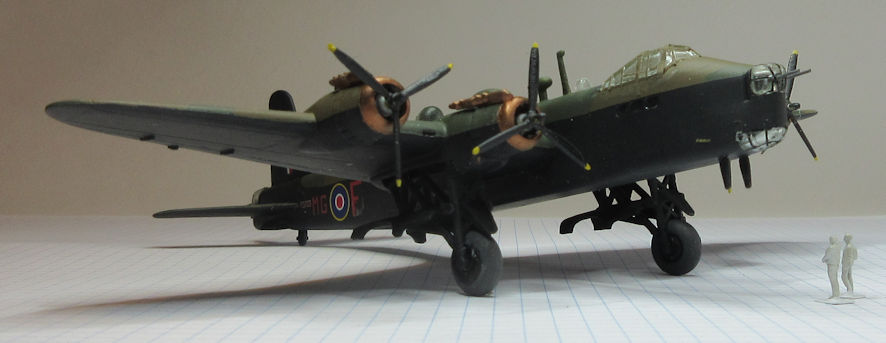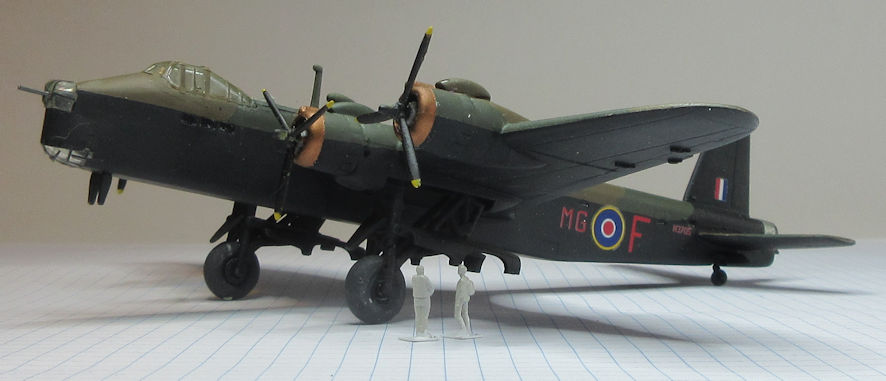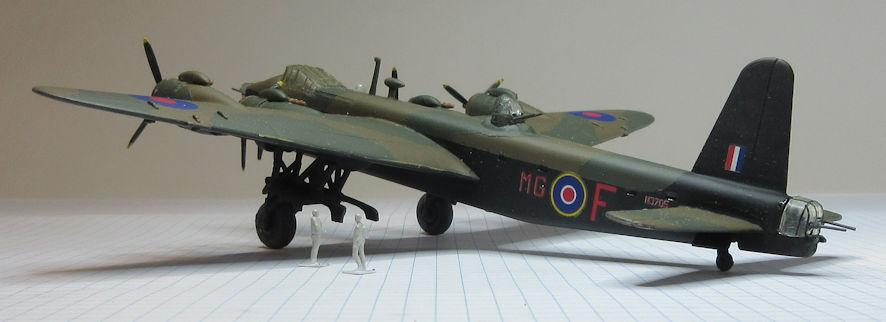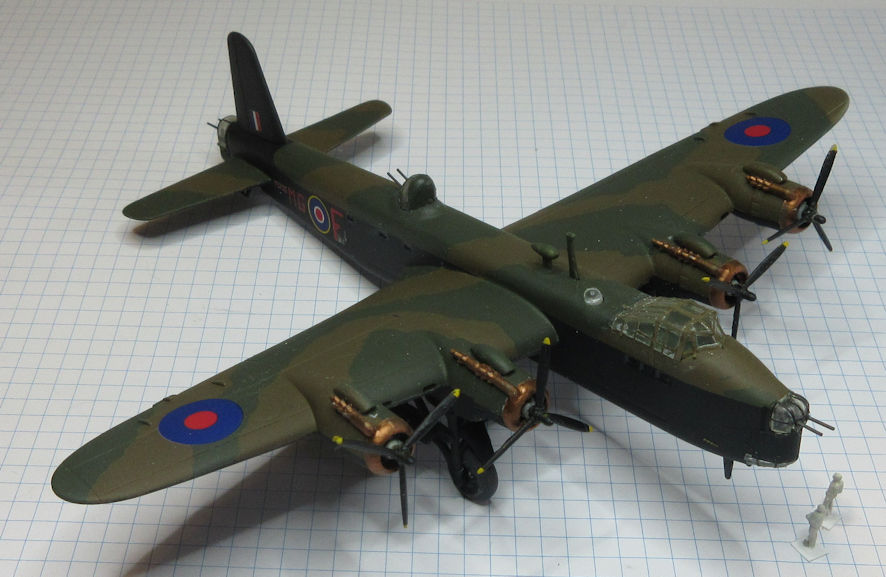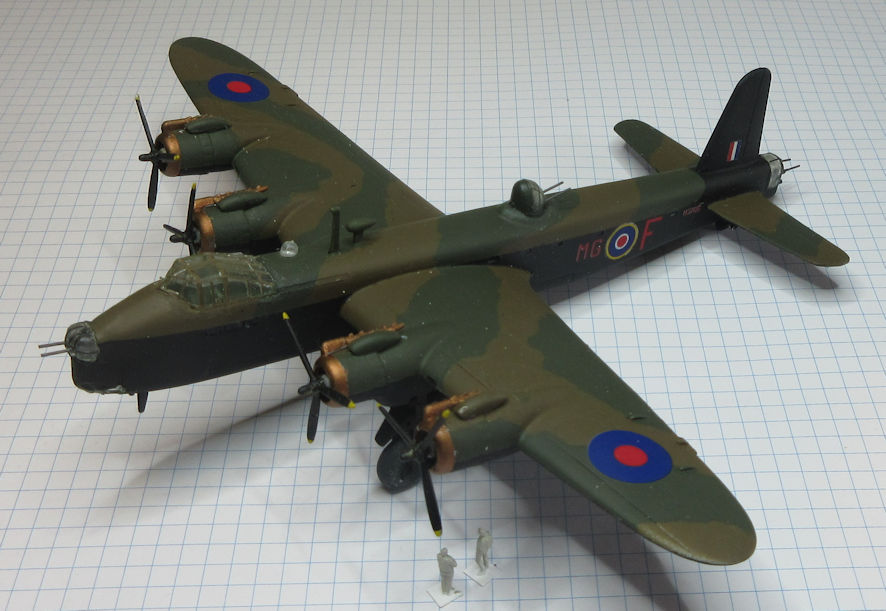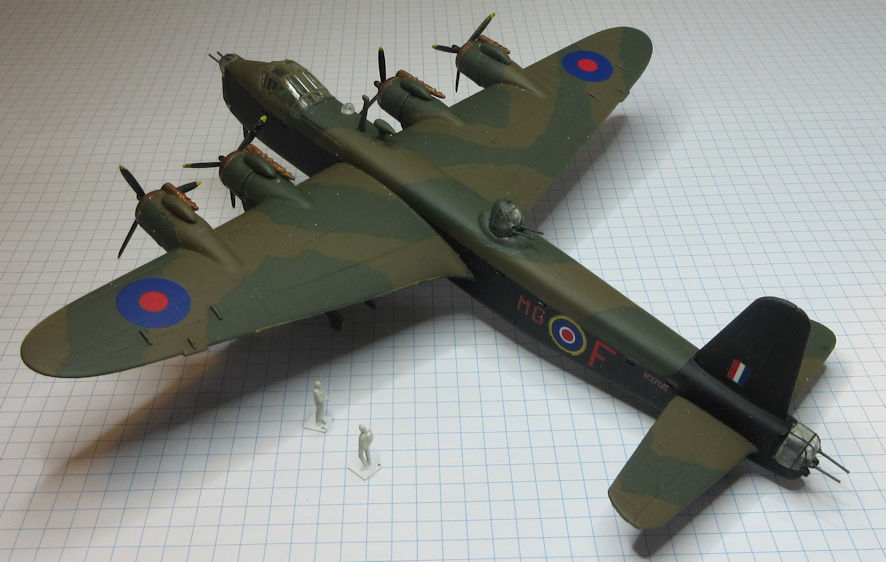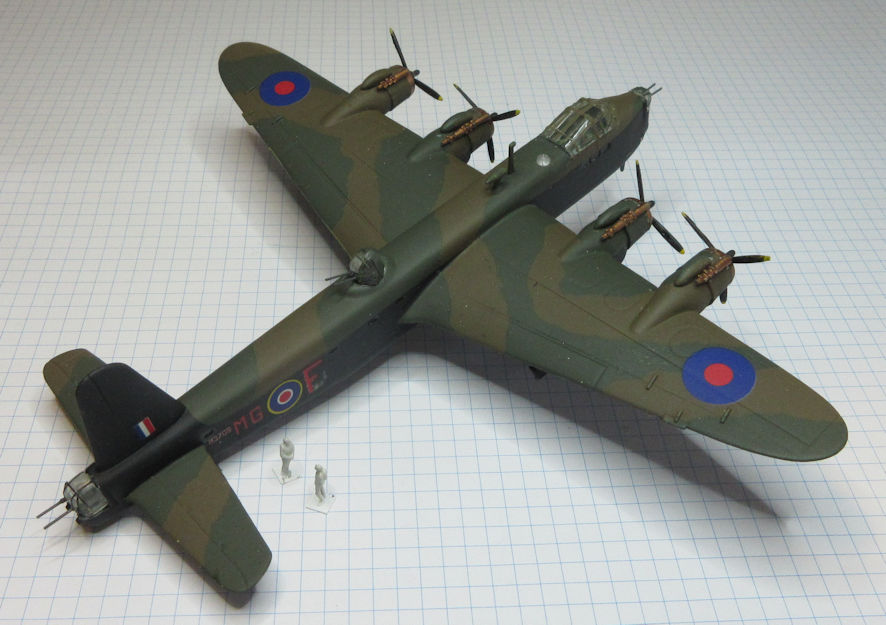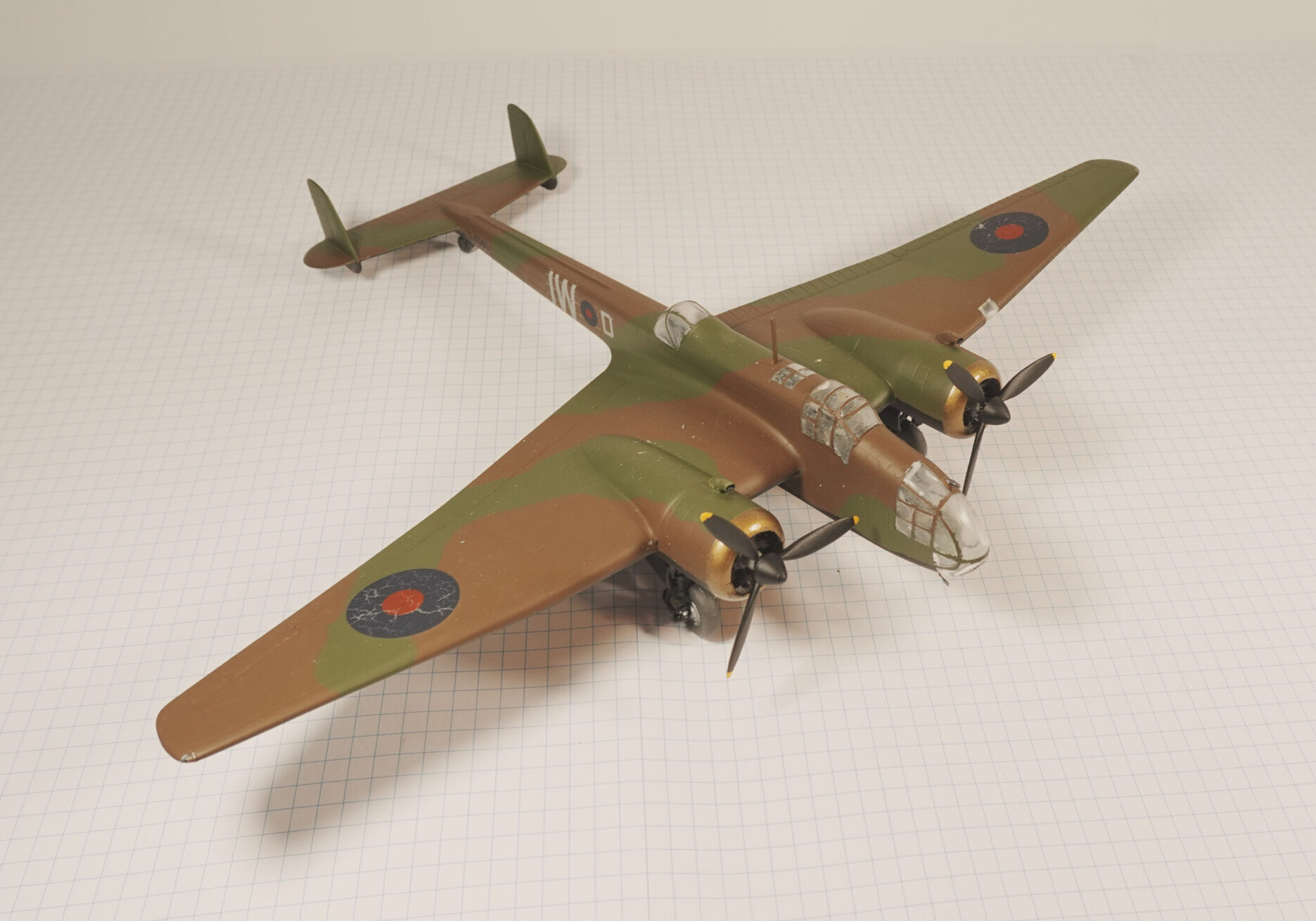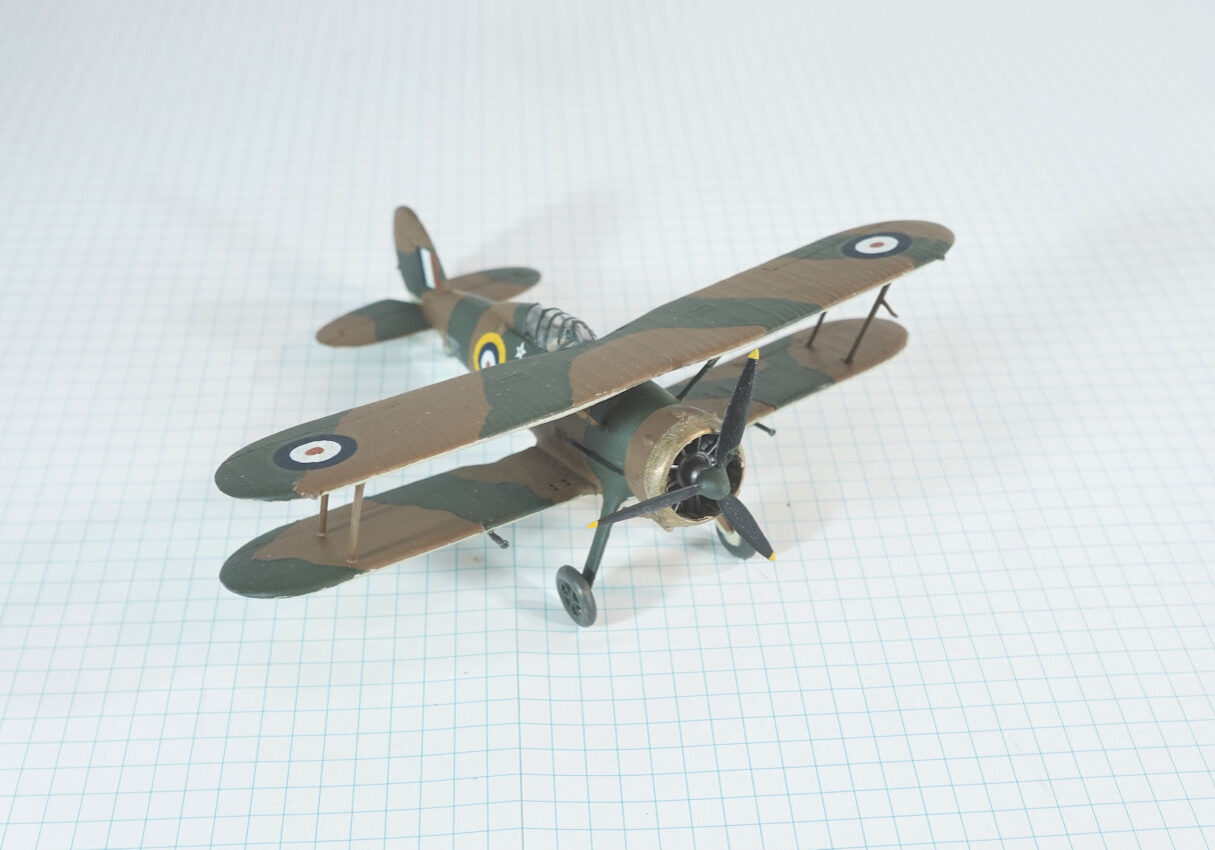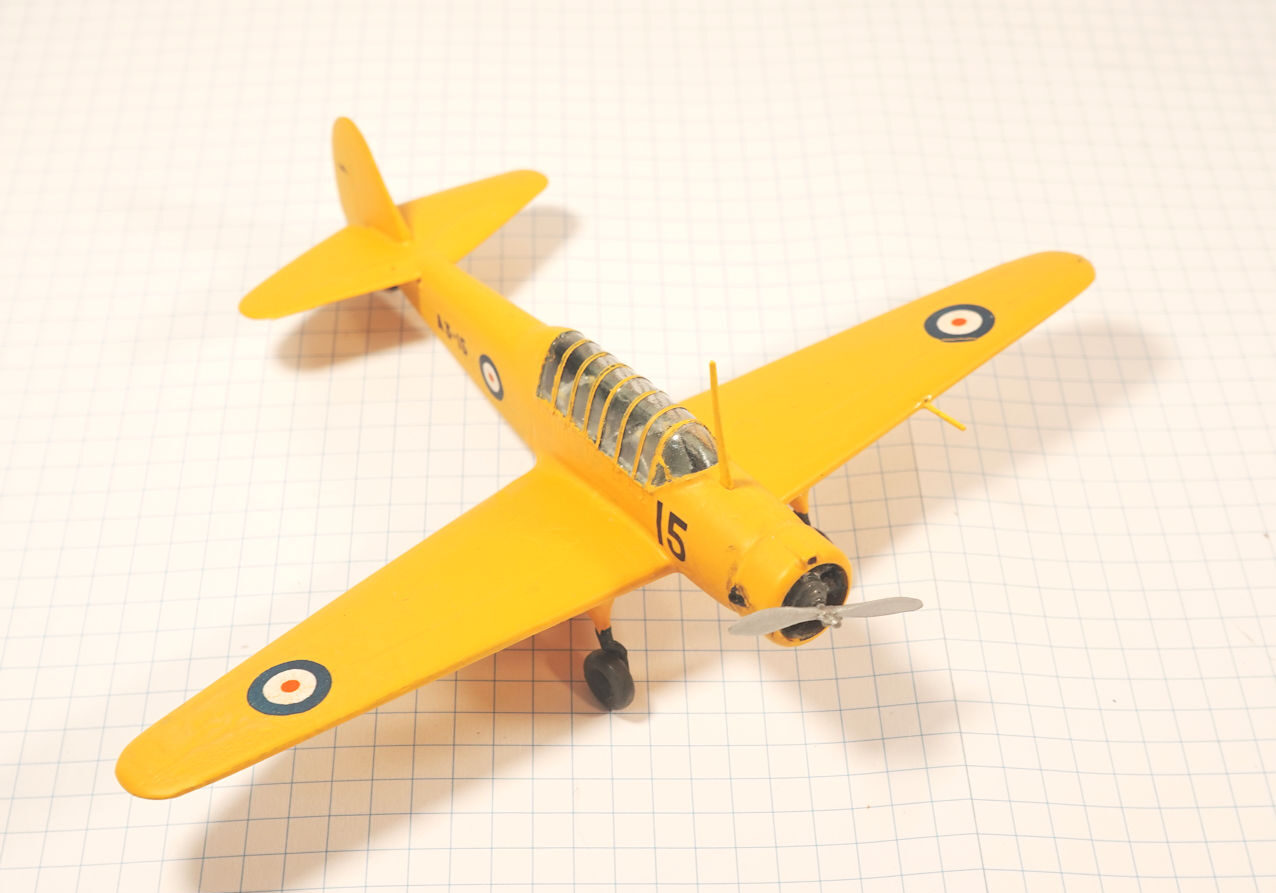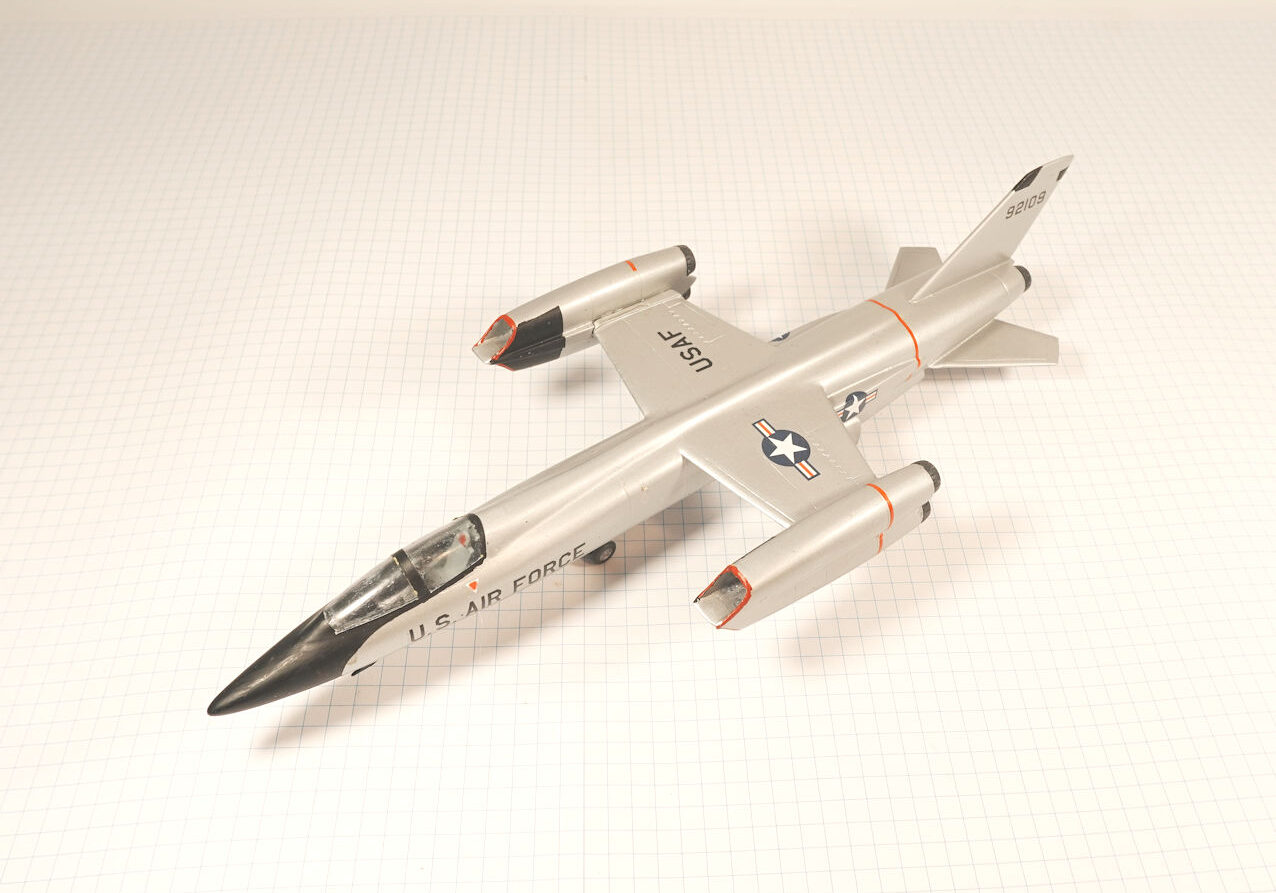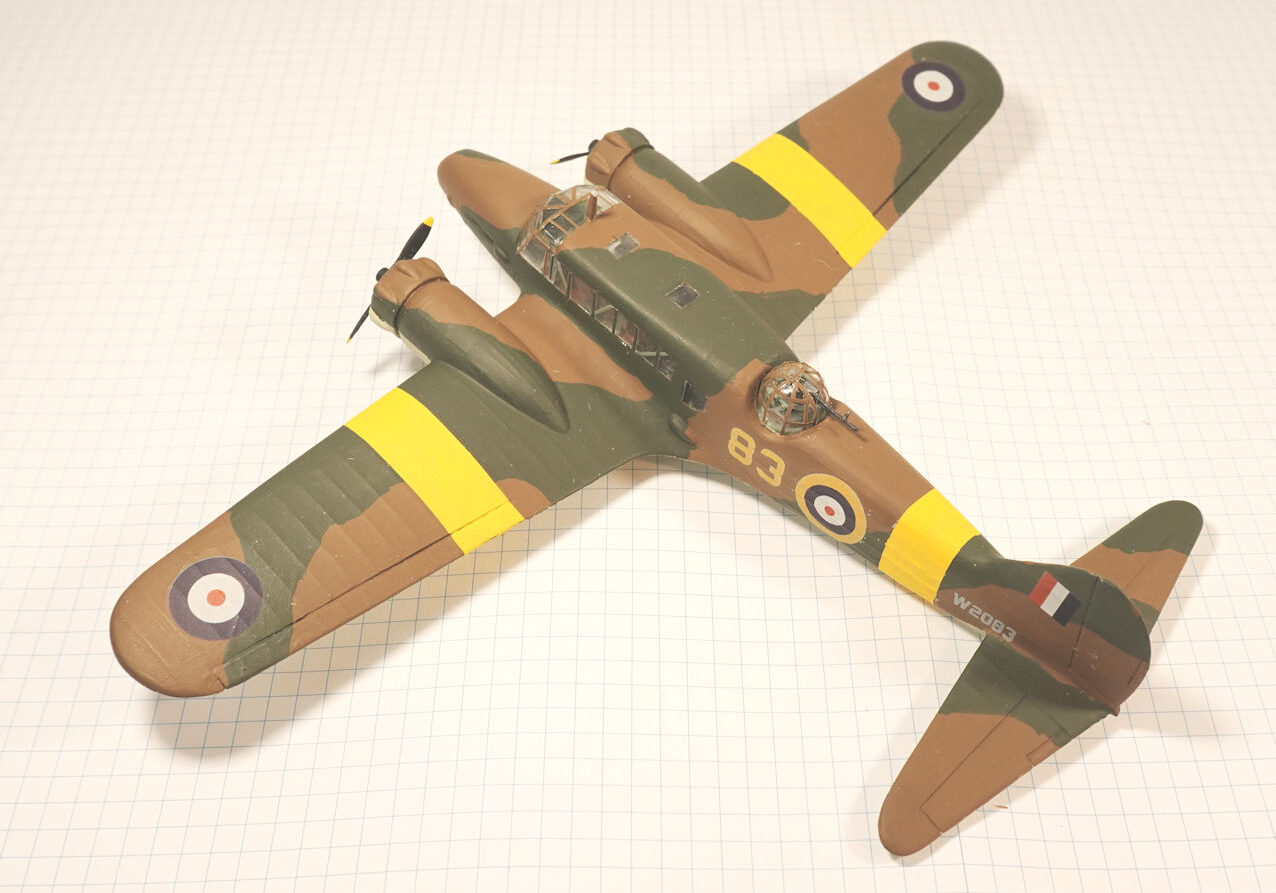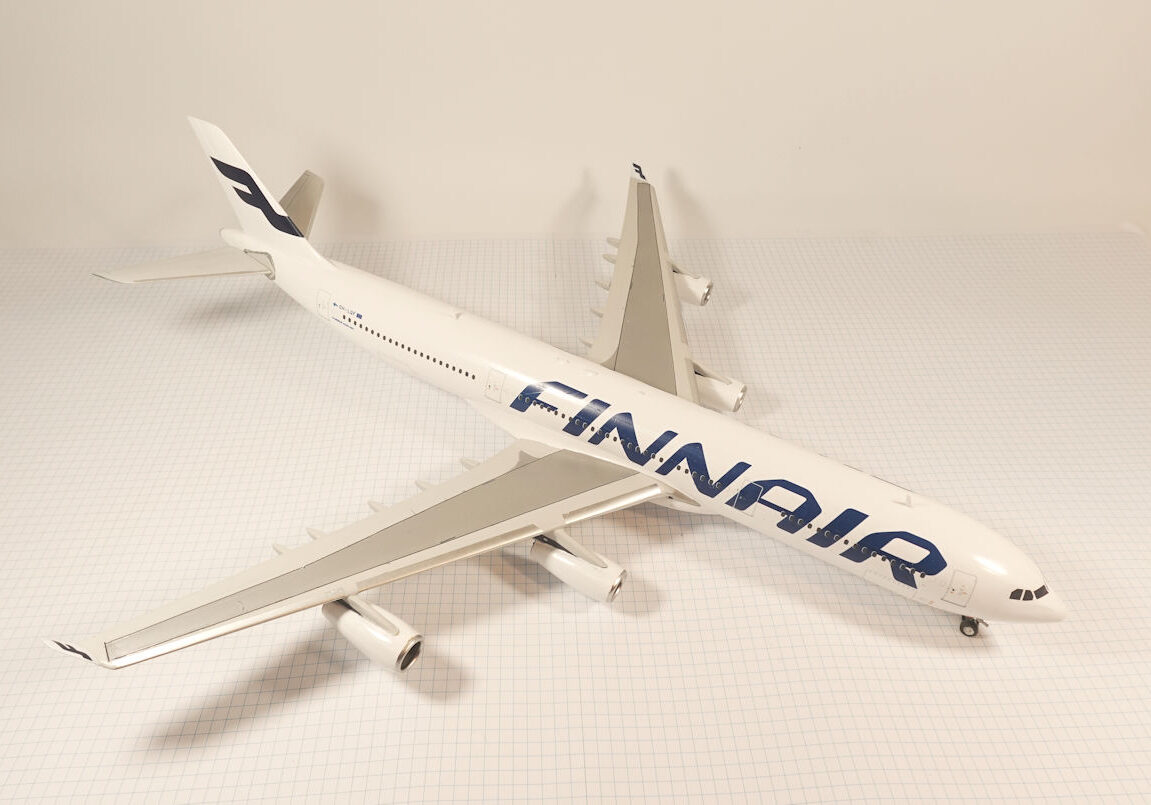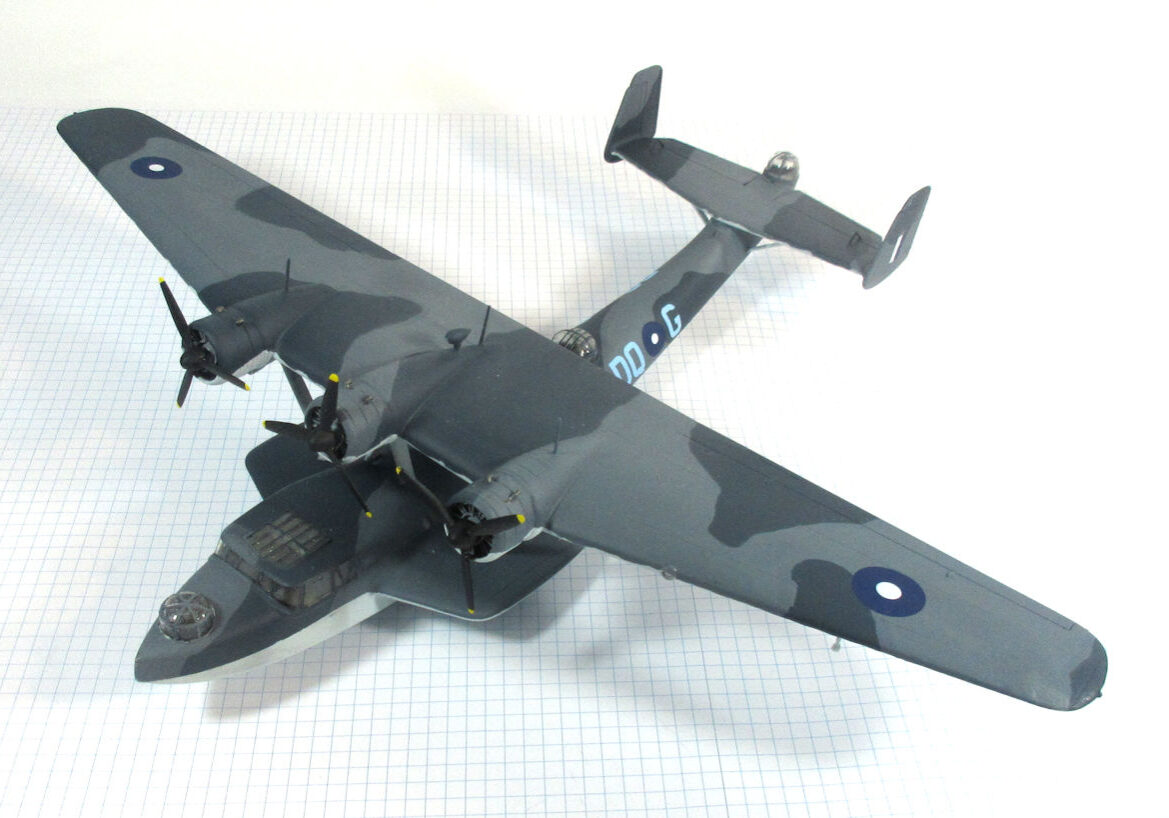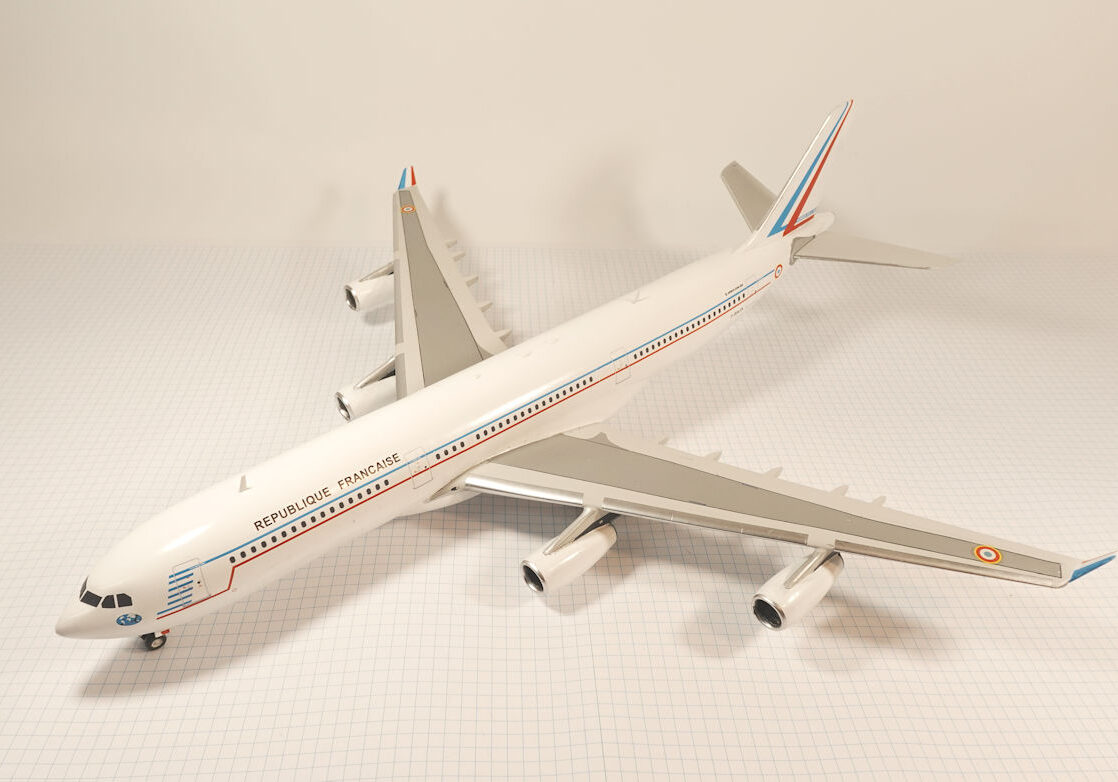History
The Short Stirling was the first of Britain’s heavy bombers to see service during World War II. It was replaced by Halifax and Lancaster bombers but continued to serve in many other roles for the rest of the war.
Development of four-engined heavy bombers for the Royal Air Force began in 1936, the first Stirling flew on 14 May 1939 and production began in August 1940.
They began entering service in January 1941 and flew their first mission on 10/11 February that year.
When Stirlings entered service they were the best heavy bombers in the world. However, they were replaced in service by the better Halifax and Lancaster bombers, and were withdrawn from service as bombers by December 1943.
This model represents the Stirling MG-F of 7 Squadron Royal Air Force (the first to fly Stirlings) which made an emergency landing in Holland on 19 August 1942 and was salvaged, repaired and later flown by the Luftwaffe.
Anigrand 1/144 kit. Completed in November 2013.
